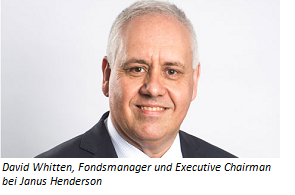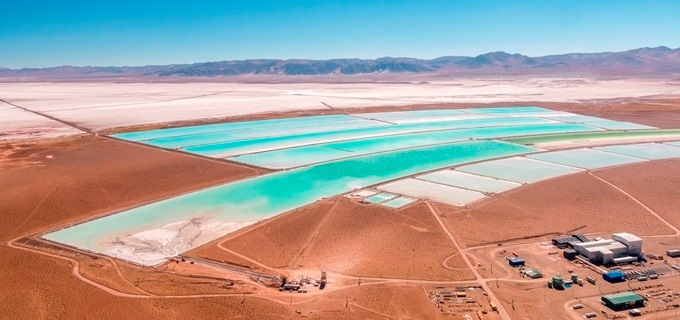
Janus Henderson: Electric vehicles transition is energising lithium demand
David Whitten, Head of Janus Henderson’s Global Natural Resources Team, provides an overview of the lithium sector, the main driver of its strong demand and the challenges faced by this growing industry.
15.09.2017 | 14:58 Uhr
 The outlook for lithium and other battery raw materials remains attractive, given rising demand and prices, in particular owing to the growing transition towards electric vehicles. However, the market’s strength is likely to be dependent on the interplay between demand and supply factors.
The outlook for lithium and other battery raw materials remains attractive, given rising demand and prices, in particular owing to the growing transition towards electric vehicles. However, the market’s strength is likely to be dependent on the interplay between demand and supply factors.
What is lithium and how is it mined?
Lithium is a chemical element that naturally occurs in granites in the form of spodumene and petalite minerals, in clays or as an ion in brine solutions that form in salt lakes or ‘salars’. Different sources of lithium require different extraction processes, resulting in varied cost structures and economies of production.
Hard rock extraction

Talison Lithium's Greenbushes lithium operations, Western Australia.
The ‘hard rock’ lithium extraction process generally involves open pit mining or occasionally underground mining to produce a spodumene concentrate, which is sold into the Chinese converter market. These converter plants then chemically convert the lithium into a market-suitable form for battery cathode manufacture. Hard rock deposits are typically quicker and easier to process and are hence more responsive to market demand. However, for converters dependant on third party raw materials, the cost of production is high (ranging from US$8,000-10,000 per tonne of lithium carbonate equivalent (LCE; high grade lithium).
Brine extraction

Orocobre evaporation ponds and plant, Salar de Olaroz, Argentina. Image courtesy of Orocobre Limited.
The brine extraction method pumps brine from a ‘salar’ into a series of evaporation ponds in order to concentrate it before the final conversion. Lithium sourced from brines tends to be more cost-competitive, but processing is slower due to its reliance on natural evaporation, which takes 18 to 24 months. While a number of technologies have been tested to speed up the evaporation process, none have yet been commercialised. New projects tend to take time to develop and ramp up to capacity and therefore, this source of lithium is comparatively less responsive to market demand.
What is driving demand for lithium?
The evolution of electric vehicles (EVs) is the key driver of demand for lithium. Volkswagen recently articulated plans to develop 30 EV models and produce over two million EVs per year by 2025, while Volvo announced that every vehicle launched from 2019 will have an electric motor. Many other automakers are following suit, with over 120 EV models either currently in development, testing or manufacture. Both France and the UK have announced plans to ban internal combustion auto sales by 2040, demonstrating governments’ support for the transition.
We believe the consensus view from the auto and battery industries is that once EV battery pack prices fall below US$150/KWh, EVs will be cost-competitive with internal combustion engines. There are suggestions that this price threshold may have already been surpassed. As the battery pack currently represents around half of an EV’s price, any additional price reduction will increase competition with conventional cars and stimulate EV demand growth.
Compared to other commodity/metals, the lithium market remains very small and the rate of growth will be highly dependent on the EV market penetration rate. The battery industry, which consumes battery-grade lithium carbonate/hydroxide, is also going through a major investment phase with tens of billions of dollars being spent on new factories, such as Tesla’s ‘Gigafactory’. For this potential demand to be realised and the supply chain to be built, there needs to be significant capital invested to develop the numerous global lithium deposits under evaluation around the world.
Conclusion
The outlook for lithium remains robust as the battery industry expands capacity to meet the forecasted demand for electric vehicles, coupled with demand that continues to outstrip supply given limited supply sources. We hold positions in lithium carbonate suppliers Orocobre and Albemarle. The latter, the industry leader, recently upgraded its five-year demand forecast to around a 15% compound annual growth rate (CAGR). Based on the team’s extensive experience of investing in the natural resources sector, the lithium industry is currently another example of the classic equity story of value creation through project appraisal.



Diesen Beitrag teilen: